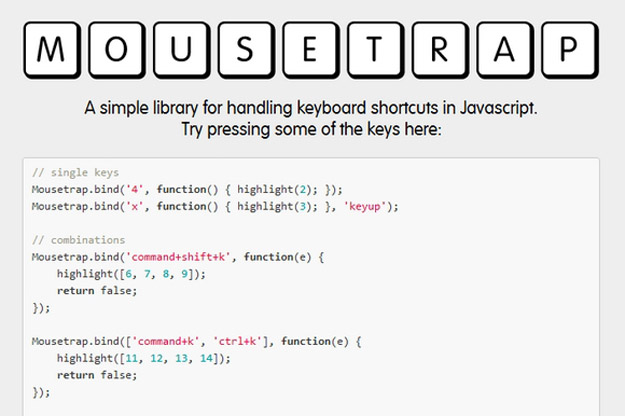
Triggers on leaving the valid target while dragging an elementįollowing are the browser events which you can use in your JavaScript code. Triggers on scrolling the scroll bar of an element Triggers on double-clicking the mouse button

Try using these too and see what they can do. We have already covered an example for onmouseover event above, these are other mouse events available. Triggers when input is provided on a formįollowing are events available for Keyboard key press. Triggers when input is provided for an element Triggers, when an element is, is in invalid
#JAVASCRIPT EVENT KEYUP CODE#
You can run the code example below to see the onblur event in action.īelow we have listed down all the events which can be used with HTML forms. In the example below, we have an input field on which we have set the onblur event handler. JavaScript onblur event is triggered when focus goes out from any input field. We can use this event to change color, size of text, or in general create an interesting user interface which changes on mouser hover. When we set this event handling on any HTML element, whenever the user takes the mouse cursor over that HTML element, then the event handler is triggered. You can make your webpage more interactive by using the onmouseover event. In the example below, we have set a simple onClick handler in the HTML tag. This event occurs when a user clicks on a button or clicks any HTML element on which we have set the event handler. Now once we add the onchange event handling on this element, whenever use selects any value, our event handler function will be executed.

In the code example below, we have created a dropdown using the tag with tags used inside it to add options to the dropdown. You can define an event handler to perform some action when this event occurs. This event is created when an HTML element like a select, or a radio button, or a checkbox, etc. Let's take a few examples covering a few different events so that you can understand how this works. This will also call the eventHandler function when the event XYZ is encountered in the HTML element ABC_ELEMENT. This is a better way of implementing event handling in JavaScript. In the above syntax, we have separated the HTML and JavaScript code completely. ĭocument.getElementById("myTag").onXYZ = eventHandler We can also do this by specifying the event handling part in JavaScript. So whenever the XYZ event will occur with respect to the ABC_ELEMENT our event handler code will be executed.įor event handling, we can either provide a JavaScript function name, and define the function separately, or we can directly provide our JavaScript code in the HTML tag itself. In the above code, we have added an event handler to capture the XYZ event on ABC_ELEMENT of the webpage. JavaScript Event Handling Syntaxįollowing is the syntax to add a handler for any particular event in any HTML element.

In the code above the function that is used to perform an action upon capturing the mouse click event is known as an Event handler, which handles a particular event when the event is triggered. In the live example below, we have implemented a simple mouse click counter, click on the Output area to see the number of clicks getting updated as we have captured the mouse click event on the complete body of the HTML page. For example, the onclick event is detected by the browser whenever you click the mouse button and using JavaScript we can perform any action on mouse click like we can set a counter and keep a track of mouse clicks to see how many times the user used the mouse click. JavaScript enables us to write scripts to be executed when any of these events occur. So everything starting from the movement of the mouse, keyboard click, hover over any particular HTML element, form submission, click on any input field, selection of a value from a dropdown, and everything else you do on a webpage, the browser generates an event for it which can be handled using JavaScript. In JavaScript, events refer to the actions that are detected by a web browser whenever it detects any user movement on the browser screen. JavaScript Events are the building blocks of an interactive webpage.


 0 kommentar(er)
0 kommentar(er)
